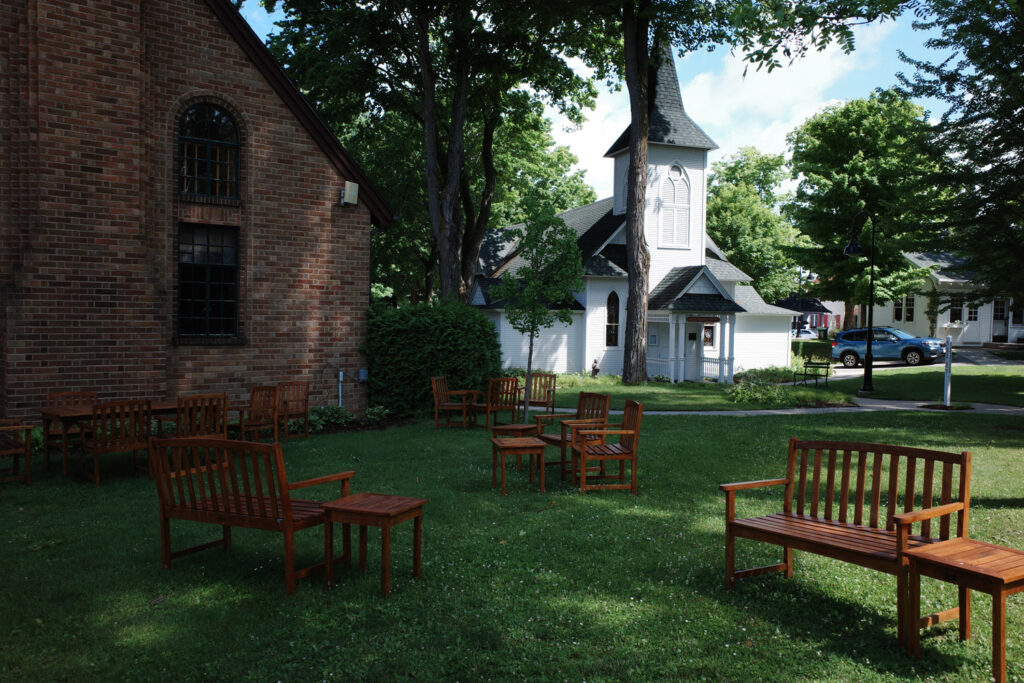Bay View — This is a place out of time. A cultural colony in the far northwest corner of the Lower Peninsula. It waits patiently on the shores of Little Traverse Bay. The 20th century still feels alive here. America in ascent. Healthy, vital, optimistic. Today, people see old photos of earlier America and wonder where it went. The houses, the streets, the warmth, the humanity. They are depressed by strip malls and suburbs.
An ancient Italian road, an old French bakery, a seaside cottage in New England, a brick street in Boston. These images resonate with people searching for a thread of cultural continuity. If you want to see a picture of healthy American culture, you don’t need to settle for Instagram. It’s still here, at Bay View. I saw it with my own eyes.
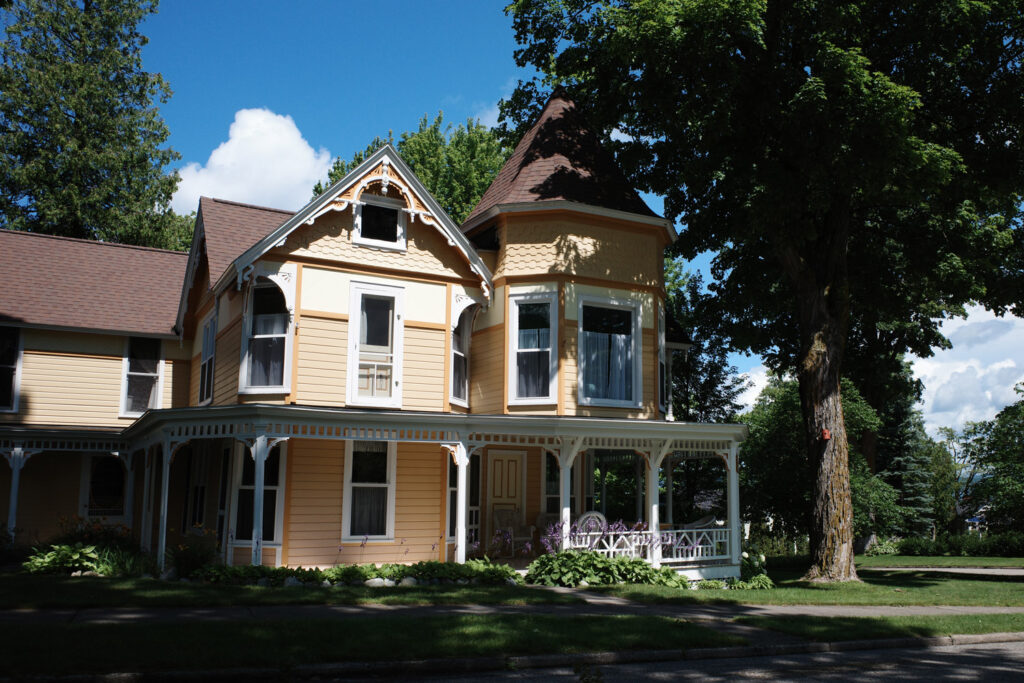
Michigan Methodists started planning Bay View nearly 150 years ago. The founders met and laid out plans in Jackson. They decided to settle on Little Traverse Bay for the picturesque summer. They could access this distant corner of the state by train or ferry. Back then, the trains still came. Today, the tracks are empty. Bay View, however, is still here. This hideaway was founded as a camp meeting—a kind of religious gathering that was popular during the era of the founding—focusing on science, culture, Christianity, and morality.
Things began slowly. The camp started with tents and meetings only a few days in the summer. A couple hundred people made their way to these quiet shores. Slowly, they built a summer community in this beautiful place. Soon enough, the grounds were planned in a warm, communal style. Parks and streets were established. A chapel rose. A decade later, they no longer needed the tents. They built 125 Victorian-style cottages above the bay. They’re there to this day. People spend their summers in them.
Bay View quickly became a part of the thriving Chautauqua movement popular during the era. The shared values are clear. The Chautauqua Institution was founded in 1874 on Chautauqua Lake in New York state. Founded by Methodists, they quickly welcomed members of other Protestant denominations from the first year onward. It was conceived of as an experimental educational program. Originally geared for Sunday school teachers, the programs quickly expanded. Music, arts, ballet, literature, and science. Chautauqua grew and became a hub of intellectual inquiry and cultural cultivation in the summers. As it grew, it inspired others across the nation. The Bay View Music Festival was started in 1886. All these years later, students and performers still find their way north to make Bay View their home for the summer. Walk around this place, and you will hear the faint sound of rehearsals. Classical music. Opera. Music stands waiting outside Crist Hall. Children playing. Families eating dinner together. Community events posted on a whiteboard. It’s part neighborhood, part summer camp. Present and past. Private, yet public. A delicate and unique balance.
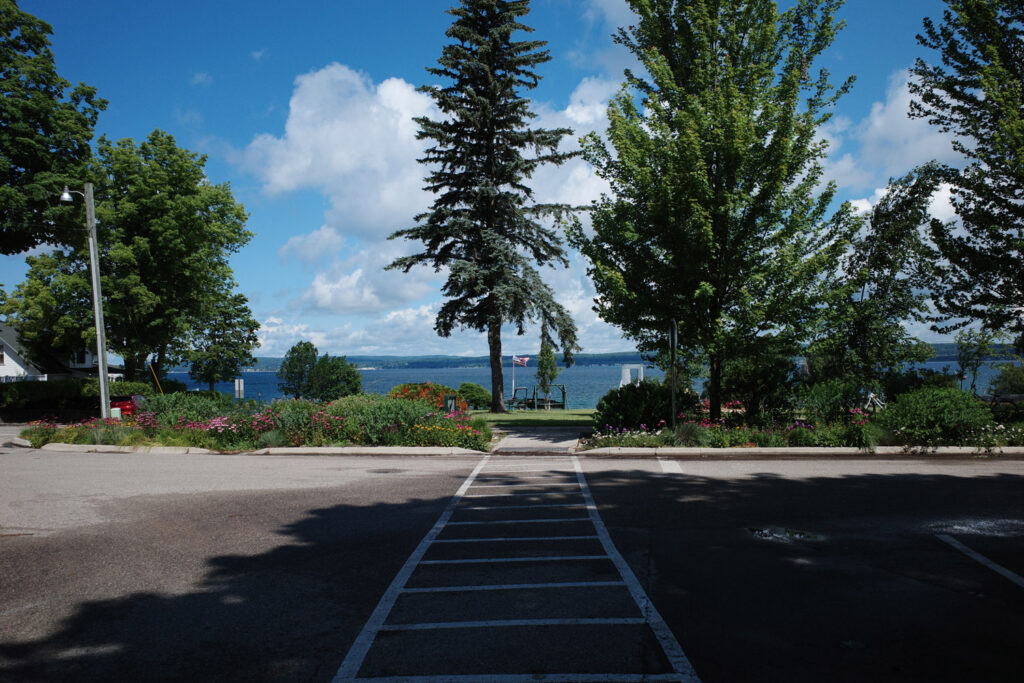
Standing on Park Ave., there’s a grassy field with a few chairs in front of me. A boy rides up carrying two tennis rackets. He tosses his bike down onto the grass. A few others lay on the sun-drenched lawn. No locks. Looking beyond the field, a couple walks along a pedestrian bridge above the highway. There are tennis courts and a beach on the other side. I can hear the faint hollow pop of a tennis ball being hit back and forth. The blue waves of Little Traverse Bay roll in. Whitecaps. A few sailboats bobbing. Harbor Springs in the distance. It’s a windy day in mid July; 67 degrees.
The roads here weren’t organized on a central grid. They twist and turn. A few parallel streets taper down to a three-way stop. Beautiful old homes line the streets. They are, more often than not, close together. They were built before modern zoning regulations. This is a historical century-old walkable community. Dinged and dented wood siding that has endured countless winters in the north. Brilliant contrast between the shutters and the walls. Blues, pinks, and yellows on white. There are porches everywhere. The wood is sloping and worn. The steps bow under the weight of time.
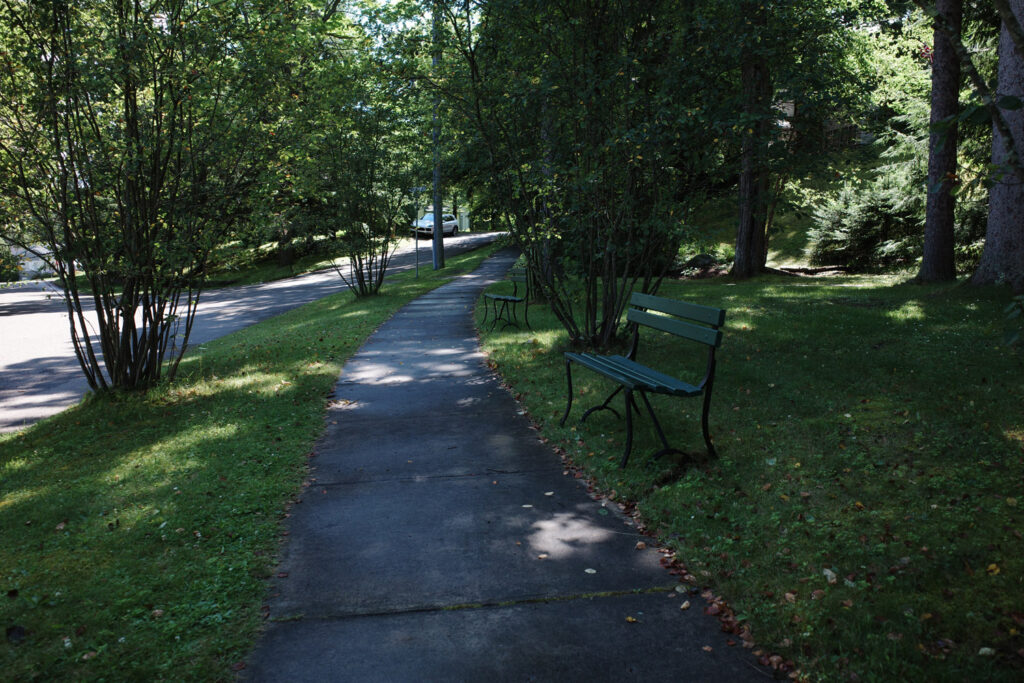
Walking through the center of Bay View, I hear a brass ensemble practicing. An opera singer in a lesson. Classical music floats through the open windows and out onto the sidewalk. Why are music camps so often in the hinterland? It feels so right here. If electronic music is the city and the concrete, acoustic music is the cottage and the forest. This place is a cultural retreat. There is an uncorrupted sense here. Beautiful buildings. Beautiful music. Beautiful trees. Beautiful waves. I stand outside the window of John Hall Auditorium. Ensembles start and stop. Imperfection. Human. Natural. The wind blows in the trees. Birds chirp. A young family walks by. A few kids whiz down Encampment Avenue. There’s no traffic here. No stoplights. The speed limit is 15 mph.
There is a small chapel in a shady nook. The library is beautiful, brown brick. There are wooden chairs and tables sitting unused and undisturbed on the green grass outside. You can sit if you want. They are there for you. No worry about theft or vandalism. There is a small white post office around the corner. A few kids sit under the awning. They are out running around by themselves, more than you see in a suburb or even a small town. Parents are scared today. People drive too fast. You don’t know your neighbors. It’s a dangerous world, but not in Bay View.
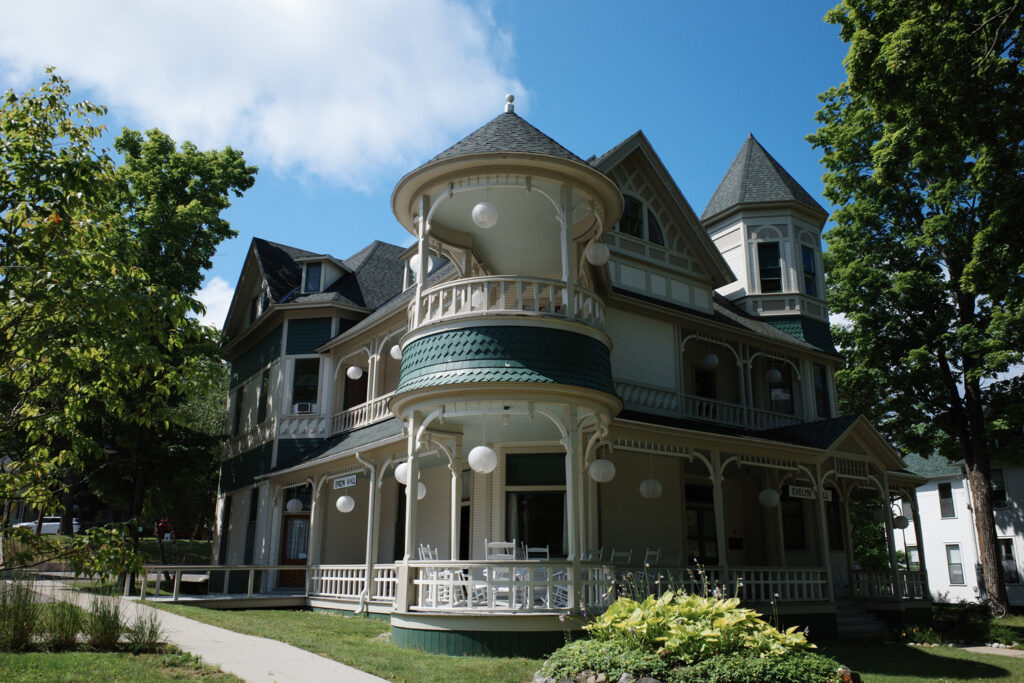
The houses in Bay View are stunning, but they aren’t glitzy or ostentatious. They don’t scream 2024. They are classic, traditional, warm, and inviting. They are not updated for the sake of being updated. They are maintained as long as possible. There are old cottages, hidden in the trees. Long, moss-covered staircases. Beautiful flowers planted all around the porches. Along the sidewalks, there are old green wooden benches every so often.
Leading up the stairs to houses, I see old pipe railings with rust gathering near the edges. This style of railing tells you everything you need to know. Deep cultural aesthetic values are often hidden in the smallest cracks. They are right under your nose. You can’t see them unless you know to look. These railings are a perfect example. Crude, practical, strong, and study. They aren’t ornamental. They are made from pieces that can be bought at a hardware store. That is the aesthetic. It is, as J. M. Cuddihy might call it, an aesthetic which exemplifies a “decorum of imperfection.” A grand sleek railing would be completely wrong. A “nicer” and “newer” railing would be worse. An old pipe railing, ascending along a shady hill toward an old cottage with old memories and old history, is American culture.
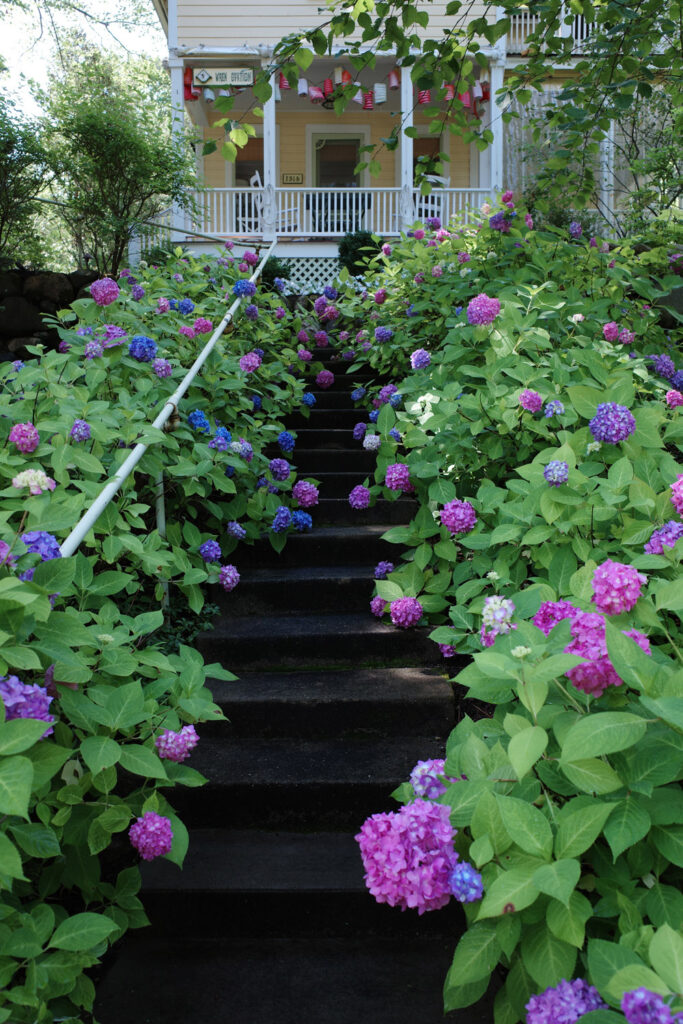
You’ve probably never heard of Bay View, because Bay View isn’t part of striver America. It isn’t trying to catch ADHD eyeballs. So much of what you see here was the same in 1909, the same in 1989. It isn’t about looking backward, it’s about cultural consistency. It reaches into the past and the future, while being in the present. So often, you hear people claim that “we don’t have any culture in America.” If that’s true, it’s true only in the places where people have decided to blow up the past for the sake of the future. Cultural continuity is about saving the past for the sake of the future. It’s about keeping a thread alive.
Much has changed in the world, but not too much has changed at Bay View. This is a refuge from the glitz of synthetic culture. Today, it’s still a cultural colony, but in a different way. Today, it’s an escape from cultural degeneration. A constant among waves of change.
O.W. Root is a writer based in Northern Michigan, with a focus on nature, food, style, and culture. Follow him on X @NecktieSalvage.
